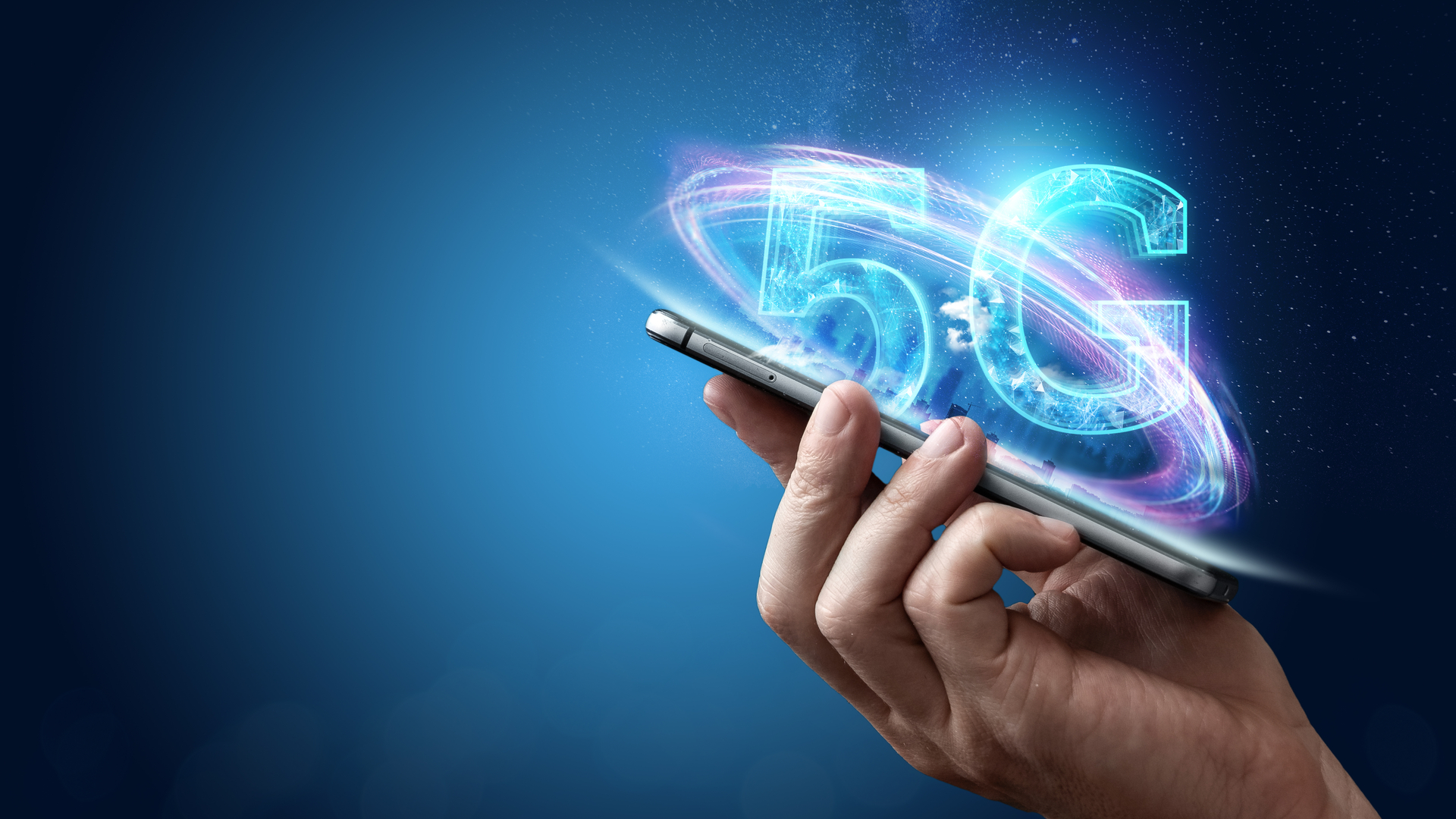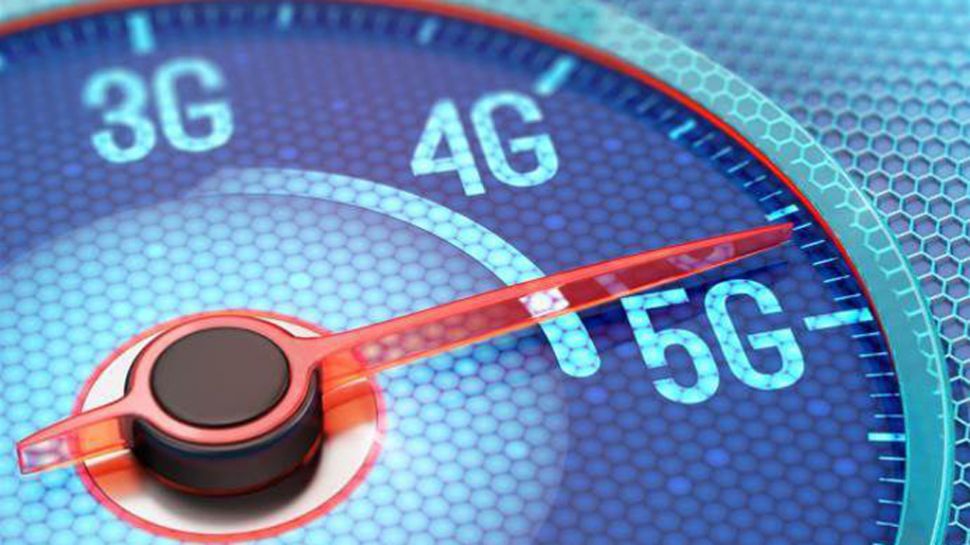A new force on the horizon: the future of video will be 5G
5G technology is finally moving from hype to real testing and deployment

Big telecom providers like AT&T and T-Mobile agree that 5G will change everything; they consider the arrival of fifth-generation technology as the beginning of the fourth industrial revolution.
In three to five years, 5G will serve as a fixed broadband replacement product, according to AT&T's CEO Randall Stephenson. This is ideal for remote areas, or any place not served by cable or fiber. Jeff Binder, executive vice president of home and entertainment at T-Mobile U.S. Inc., says that the emergence of 5G technology will be a game-changer for both the mobile phone and digital video markets.
- 5G's impact on the future of work
- The future of cybersecurity in a 5G-connected world
- Samsung starts mass production of 5G chips
How 5G is different from 4G
Currently, 4G, or 4th generation technology, is what we're mostly using for cellular internet. Below are a few things that make 5G different from 4G:
- Speed: 5G is expected to be approximately 10 to 20 times faster than 4G. Compared to LTE Advanced 4G, which maxes out at 1 Gbps download speeds and 500 Mbps upload speeds (typically in large cities), 5G's peak target data rate is estimated at 20 Gbps.
- Connectivity: 5G will offer more seamless, uninterrupted connections.
- Latency: Network latency, the time it takes for a network to respond to a request (i.e. when you click a link or stream a video), is expected to be lower with 5G. With 5G networks, latency can drop to 10 milliseconds, compared to 4G's 15 to 60 milliseconds, making lag times nearly undetectable.
- Radio Frequencies: 5G will use higher frequencies than 4G, which allows for lower latency, greater bandwidth, and the ability to connect more devices to a given network. 4G uses frequencies below 6 GHz. In contrast, 5G will use frequencies between 30 to 300 GHz.

5G trials
In anticipation of 5G's arrival on the commercial market, various telecom operators have been working with vendors on a number of 5G trials across the U.S. These trial runs allow operators to test 5G technology and see how it works.
For instance, AT&T currently offers mobile 5G technology to select customers in 19 cities. Residential, small business, and enterprise customers experienced speedy broadband services over a fixed wireless 5G network when streaming premium live TV services. Other 5G trials showed upload and download speeds around 1Gbps during video streaming, download, and conferencing experiences. By 2020, AT&T is expected to have nationwide 5G reach.
Telecom giant Verizon Wireless offers 5G broadband internet called 5G Home in certain geographical areas. Customers can expect unlimited data and speeds ranging from 300 Mbps to up to 1 Gbps, depending on location.
Starting in May, Sprint will provide mobile 5G service to several cities, mostly at airports and/or sports venues. To prepare for its 5G launch in 2019, which is expected to cover 1.4 million people, Sprint deployed an LTE advanced network to 300 cities, which delivers gigabit speeds to compatible devices.
Are you a pro? Subscribe to our newsletter
Sign up to the TechRadar Pro newsletter to get all the top news, opinion, features and guidance your business needs to succeed!
Video will dominate 5G traffic
5G is predicted to shake up a host of industries. With the use of 5G technology, businesses will no longer need to invest in high bandwidth communication lines and equipment, giving them the ability to access their target market with higher reliability and quality than ever before. Media and entertainment companies are undeniably among those that stand to reap the rewards.
According to the 5G Economics of Entertainment Report, 5G will drive $1.3 trillion in new revenues in the media entertainment industry by 2028, while a report from Intel and Ovum foresees that user demand for video is poised to grow significantly. The average monthly traffic per 5G subscriber will increase from 11.7GB in 2019 to 84.4GB in 2028. Ultimately, video will make up 90 percent of all 5G traffic.
One of the reasons for such astounding growth is the fact that 5G is expected to solve one of the biggest frustrations for mobile video - video buffering. It will take 1 millisecond or less to respond to data requests or as AT&T Business chief marketing officer Mo Katibeh puts it, "as fast as your brain processes reality."
Mobile customers will also be able to enjoy Ultra HD (UHD) videos across any platform wherever they are. For 5G, the targeted download rate is 20 Gbps and the upload rate is 10 Gbps. This will allow a more fiber-like experience on the go. There will be faster UHD downloads and higher-quality live sharing and streams.
Furthermore, 5G is expected to enable a truly immersive virtual reality experience due to its ultra-low latency (less than 5 milliseconds). 5G will allow viewers to stream more enjoyable, lifelike VR content by preventing nausea, which users tend to experience at more than 20 milliseconds of latency. Moreover, 5G may deliver a new sensory dimension to viewing experiences. By connecting haptic suits to 5G, users can experience new sensations such as heat and pressure. This provides a new, immersive experience to VR video games, music concerts and even movies. AR, VR, and cloud gaming (high speeds and low lag times) are forecast to see up to 2400 percent in growth over the next 10 years, enabling a whole new channel for content producers to reach consumers.

Are you ready for the 5G era?
The 5G era is rapidly approaching, promising new and amazing opportunities for video content creators, broadcasters and consumers alike. It will not be here tomorrow – 2022 is the earliest forecast for consumer market deployment – and, as with any emerging technology, it will require significant adjustments to the infrastructure, hardware and software sectors. But a version of the future in which we can ignore this new disruptor doesn’t exist anymore.
The technology is finally moving from hype to real testing and deployment, which means media and entertainment companies should prepare their offerings and business models to facilitate and monetize these new capabilities.
Max Kalmykov VP, Media and Entertainment at DataArt
